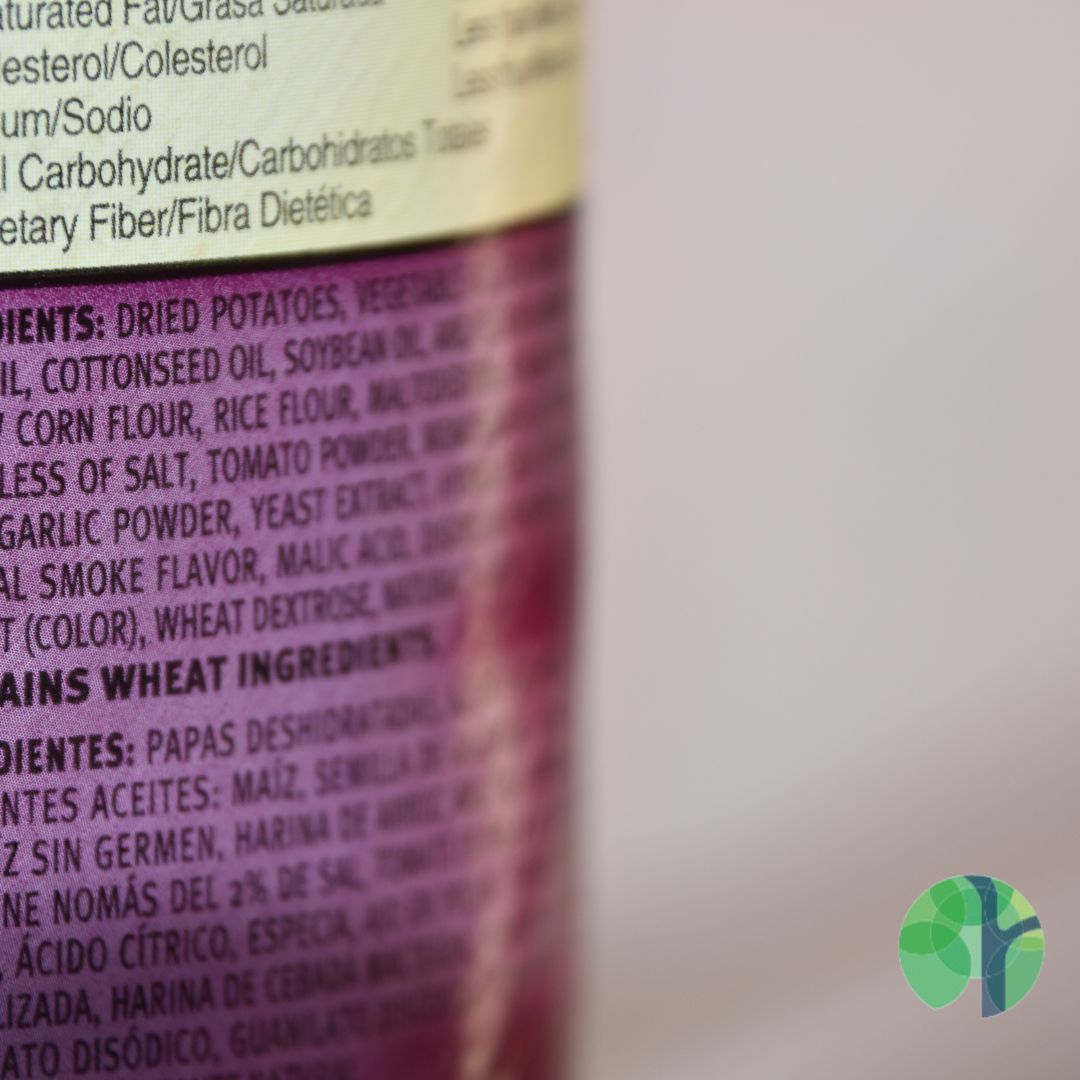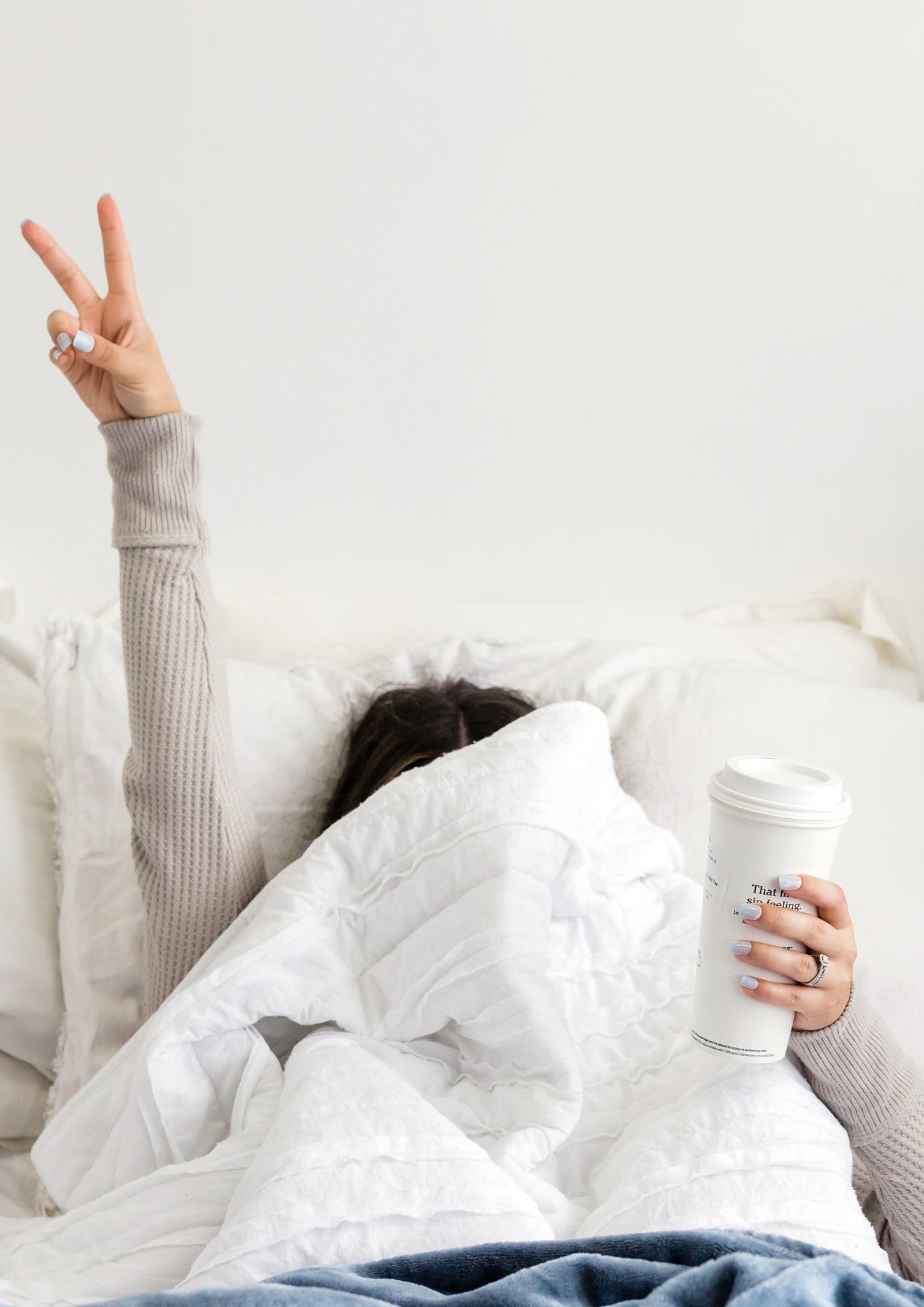
Spinach and Lentil Curry
This is a great meal to batch cook. You can make a huge pot at the weekend (with the spinach you’ve grown – see below), and then divide into portions and pop in the freezer for using at another time. This means you always have a healthy meal on hand, even if you’re super busy.
Ingredients:
1 tbsp extra virgin olive oil or ghee
1 large onion, sliced finely
3 cloves garlic, crushed
1 inch ginger, skin removed and grated
2 tsp curry powder (strength to taste)
1 tsp cumin
½ tsp sea salt
Pinch of chilli flakes, to taste
Juice of 1 lime
120ml vegetable bouillon
½ can coconut milk
400g cooked lentils (you can buy these tinned)
½ pack fresh coriander, chopped
200g fresh spinach
Method:

Top 10 Ingredients to Watch Out For
I'd need a lot more space to list out all the names on the naughty list but this list, while not exhaustive, is a good starting point if you want to know you are eating as well as you can for your health.
Bottom line: if you can't pronounce the ingredient, it's probably not something you want to put into your body! And if you don't recognise something as 'food', chances are your body won't either.
Blue 1, Caramel color, Red 3 (Erythrosine), Red 40, Titanium Dioxide, Yellow 5 (Tartrazine), Yellow 6.
Autolysed yeast extract, hydrolysed protein, monosodium glutamate (MSG), “natural flavours”.
Aspartame, sucralose, and saccharin are some of the main ones.
There are many names for sugar, including: glucose, fructose, sucrose, dextrose, maltose, honey, treacle, agave, maple syrup, fruit juice, lactose, isoglucose, dates, dried fruit, raisins/sultanas, grape concentrate.
Or other processed flours.
Rapeseed (aka canola oil) unless cold pressed, corn, partially hydrogenated oils, soybean.
BHA (butylated hydroxyanisole), BHT (butylated hydroxytoluene), calcium propionate, propylparaben, methylparaben, propyl gallate, sodium benzoate, potassium benzoate, sodium nitrate, sodium nitrite, sodium phosphate, TBHQ (tert-butylhydroquinone)
Carrageenan, lecithin, gellan gum, cellulose gum, monoglycerides, diglycerides.
Azodicarbonamide, calcium peroxide, DATEM (diacetyl tartaric acid esters of monoglycerides).
Soy protein isolate is a common highly processed genetically modified protein supplement in many ‘healthy’ or diet foods.
If you’d like to know more, why not download my free guide to Making Sense of Food Labels here.

Making sense of food labels
Labels provide us with useful information about what packaged food contains they can be confusing (not to mention misleading). Remember the labels are also there to help sell the product - so you need to look more closely if you really want to understand what you are eating.
What should we eat?
As a nutritional therapist, when I'm working with my clients, we are looking at the science of what to eat to achieve their specific health goal but just as important is how much you eat (as well as why and how, but that's another story).
It's very easy to accidentally find yourself eating either too much or too little. So what does the 'average' person need to eat in terms of energy every day?
Each day
Women
Calories: 2000 kcals
Sugar: 25g or 6tsp
Sodium: 2g
Salt: 5g
Men
Calories: 2500 kcals
Sugar: 31g or 8tsp
Sodium: 2g
Salt: 5g
Hidden starches
When buying starchy foods like bread, rice, and pasta, look for wholegrain/ whole wheat / wholemeal varieties. Avoid any form of sugar, white or refined foods and look out for hidden starches in the ingredients list such as potato starch, corn starch, and rice starch – all of these will be broken down into sugar by the body. Your body cannot tell the difference between these starches and real sugar.
PER 100G A Lot A Little
Sugars 10g 2g
Salt 125g 0.25g
Sodium 0.5g 0.1g
Be label savvy
When you see a claim like “No added sugar” or “30% less sugar”, look closer at the label. The manufacturer will want the low-sugar version to match the taste of the original as closely as possible. A famous trick is to add maltodextrin – a polysaccharide and therefore technically a starch, not a sugar. However, it is still broken down into sugar very quickly and will impact your blood sugar levels, which is important for all aspects of health.
When you see “50% fewer calories”, again, read the label. The product will be lower in fat than the original but, for this to be true, it must be higher in carbohydrates. For example, a packet of crisps – made of fried potato slices and salt – is not a healthy food and is high in calories. A packet of ‘healthy’ crisps right next to it may be lower in calories and ‘baked’ but could well contain potato starch, maize starch, rice starch and maltodextrin. Is that a healthy crisp? No.
Ingredients
Ingredients are listed by the order of weight.
The ingredient used the MOST is listed first,
and the ingredient used the LEAST is listed last!
How many ingredients does it contain?
WHY IT MATTERS: Foods with many ingredients are often highly processed (“ultra-processed”).
Processed foods are often less nutritious and are designed to be "highly palatable" ... which means you’re likely to eat more of them in one sitting, and also more frequently. This can translate into eating more calories with less nutrition value.
Do you KNOW WHAT each ingredient IS?
WHY IT MATTERS: Many times, unhealthy fats (like hydrogenated oils (or trans fats) and added sugars can sneak into your food under different names.
Manufacturers know people get (on a conceptual level at least) they should eat less sugar, so they work hard to call that sugar by another name to fool you into thinking their product is healthy. Tricky, right?
Want to know more? Book in a free 30-minute health review and we can get you on track - just click here.

Olive, Mushroom and Feta Frittata
This is a great quick and easy lunch recipe that’s protein-rich and delicious! Just pair with a quick green salad for some crunch.
Serves 4
Ingredients
1 tbsp olive oil
Pinch salt
Handful black olives, sliced
6 shiitake mushrooms, sliced
6 eggs, beaten
50g feta cheese, crumbled
Half a small bunch torn basil leaves
Method:


Top Tips for a Better Night’s Sleep
Here are my top tips for getting a better night’s sleep. See what you can put into action.
Get plenty of natural light
Getting outdoors during the day – whatever the time of year - can help regulate the circadian rhythm. Spending time outside or near a window can help, as can using a light therapy box during the winter months. Getting out for a morning walk is a great way to start the day and wake your body up on every level imaginable.
Exercise every day
Try to take some kind of exercise every day. There is evidence that regular exercise improves restful sleep. This includes stretching and aerobic exercise. A brisk walk ticks both boxes.
Watch your caffeine
Caffeine has a very long half-life, and it can take 6-8 hours for half the caffeine in your cuppa to leave your body. Consider that any caffeine after 2pm (if you go to bed at 10pm) will have a deleterious effect on the quality of your sleep – even if you cannot feel it.
Similarly, a few alcoholic drinks and eating late at night can also make it harder to get a good quality sleep.
Dim lights in the evening
At the other end of the day, you want to be encouraging your body to make more of the night-time hormones, which means reducing the amount of bright light. If you have dimmer switches, use those. Or use side lights instead of the main overhead lights. These subtle lighting changes can make a difference.
Avoid screens before bed
You learnt earlier that blue light from electronic devices can interfere with the circadian rhythm and make it harder to fall asleep. Think about what else you could do to avoid using things like smartphones, tablets, and computers for at least an hour or so before bedtime. Consider real books or a Kindle (which has a different type of light to a tablet).
Take time to wind down
Establishing a relaxing bedtime routine can help signal to the body that it is time to sleep. This is exactly what we do with babies, and there’s no reason why you cannot adopt some of this for yourself: warm bath, read a book, lights out. You might find it helpful to practise relaxation techniques like yoga or try some guided meditation.
Don’t engage in stimulating activities
… like playing a competitive game, watching an edge-of-the seat film, or having an important conversation with a loved one. Even watching the news can be triggering.
Keep the bedroom dark, quiet, and cool
Creating a comfortable sleep environment helps promote better sleep. This includes keeping the bedroom dark, quiet, and cool, and using comfortable bedding and pillows. Use your bed only for sleep and sex. This may help you completely switch off. Since the sleep hormone melatonin likes it dark, if you don’t live in the middle of nowhere and you don’t have blackout blinds, a generously sized silk eye mask is a good option to create a dark environment.
Ditch that smartphone alarm clock
Consider getting a traditional alarm clock so your smartphone can stay out of the bedroom – this will also help remove temptations to check messages and/or social media. Better still, work out how much sleep you need by going to bed 15 minutes earlier until you find that you wake up naturally before your alarm. That’s your personal sleep requirement.
Stick to a consistent sleep schedule
Going to bed and waking up at the same time every day can help regulate the circadian rhythm. This means avoiding staying up late on weekends or sleeping in too much on days off.
And if you’re continuing to have issues with your sleep, why don’t you get in touch for a free health review? We can look at what might be underlying and see if we can get you sleeping better.

Sleep Well for Better Health
Sleep really is a gamechanger for your health and for your emotional wellbeing but even so, scientists are only just starting to begin to understand the biological role. I know that you know that everything looks better when you are well rested. It’s an essential function for everyone and lack of it can wreak havoc with all kinds of functions in the body, from your lived experience every day, to weight gain, lowered immunity, and increased risk for metabolic conditions like diabetes, high blood pressure, and cardiovascular disease.
As far as we can tell, the purpose of sleep is for the body and mind to rest and repair, and that process in humans takes between seven and nine hours, which is where the idea comes from that everyone should get eight hours sleep a night. Perhaps you do, in which case I salute you, but many people don’t, and there are always consequences. Your mood, creativity and tolerance are lower than they would otherwise be, and your motivation to eat well goes out of the window.
There will be times when sleep gets a little patchy. However, if you regularly get less than seven hours a night (and it really doesn’t matter what you have convinced yourself you can get by on), I invite you to really look at the impact it might be having on your life.
Sleep has a terrible PR and can often feel like just another thing to add to your to-do list but – for one week – I invite you to really prioritise your sleep and throw everything you have at getting more of it. Then step back and see how you feel. Throughout this guide, I’ll be answering some questions I’m often asked about sleep, reminding you why sleep really matters and giving you some tips to help make sleep your health focus so you have the best chance of a restful night.
What happens when you sleep?
When you sleep, a series of physiological changes take place that allow your body to fully get into a state of rest so that it can repair and prepare for the next day. There are elements that scientists even now don’t understand but – through studying what happens when people don’t get enough – we know that sleep is an essential process. Research shows this time spent resting fulfils a vital function that keeps you healthy. Aside from other actions, sleep removes toxins in your brain that build up while you are awake, so small wonder getting your fill makes you feel more alive!
There are two main types of sleep: REM sleep and non-REM sleep, the latter having three different stages you’ll cycle through each night.
Stage N1 (non-REM) is a very light kind of sleep between being awake and asleep. Your heartbeat, breathing and eye movements slow, and your muscles relax although you might get the occasional twitch.
Stage N2 (non-REM) sleep sees your body go a little deeper into sleep. Your heartrate and breathing are slow, muscles relax even more, and brainwave activity slows. This is the most common sleep stage to be in.
Stage N3 (non-REM) is the deepest level of sleep and the most restorative. It’s the most difficult to wake from and, for some people, even loud noises do not rouse them. It’s here that the body repairs and repairs, builds bone and muscle and the immune system is strengthened. It is also the stage in which sleepwalking, night terrors, and bedwetting happens.
You’ll cycle through all these several times a night. The exact make-up will change from person to person and even from day to day. You’ll know this if you have a Fitbit or a smartphone app that measures your sleep cycles. Some days you’ll spend longer in those deep and restorative sleep cycles than others.
REM sleep is interesting because the brain is very active - brainwaves are very much like those that occur when you are awake. This is when your dreams happen, and it’s not usually considered a restful phase.
A complete sleep cycle takes about 90 minutes, and you’ll typically go through four to five cycles each night. The normal pattern is N1, N2, N3, N2, REM.
Why am I not sleeping?
There are a multitude of reasons, but here are some of the main ones that I see with my clients:
SLEEP
Too much stress is one of the most common reasons my clients struggle to sleep. It doesn’t have to be ‘big’ stuff like divorce, bereavement or a house move. It could equally be the relentlessness of daily life – like work issues, family or relationship worries or even traffic jams. Regardless of the source, stress triggers the hypothalamic-pituitary-adrenal (HPA) axis in the central nervous system and puts you in fight or flight mode; essentially, a sense of high alert. Prolonged stress means more stimulation of this HPA axis and, potentially, higher levels of stress hormones at night. If you’ve ever felt tired but wired (exhausted physically but your mind is whirring), this is it. Until you can dial down those stress hormones, you’ll have little chance of nodding off.
BLOOD SUGAR IMBALANCE
I’ve often seen clients with blood sugar imbalances created by consuming too much sugar, starchy carbs and refined foods, with poor sleep. They might find it easy to get to sleep initially but wake in the early hours. If you’re riding a blood sugar rollercoaster, your glucose levels can drop too low at night (a hypo) and, if you’re in a light sleep cycle, this can easily wake you up – even in those who do not have diabetes.
PERIMENOPAUSE
Declining oestrogen in the transition to menopause can cause a wealth of hormonal issues, including night sweats and hot flushes, both of which are detrimental to a good night’s sleep. Oestrogen also helps promote deep sleep, while progesterone (another retreating hormone at this stage of life) has a calming and sleep-inducing effect. When their levels fluctuate, it can disrupt the normal sleep-wake cycle and lead to sleep disturbances. Add to that, hormonal fluctuations can also affect mood and increase stress levels. Anxiety, irritability, and mood swings are common symptoms during perimenopause. These emotional changes can make it challenging to relax and fall asleep, leading to an increased likelihood of insomnia or disrupted sleep.
SLEEP APNOEA
Sleep apnoea is a common sleep disorder characterised by repetitive pauses in breathing or shallow breaths during sleep. These pauses (or apnoeas) can last for several seconds to minutes and can happen multiple times throughout the night, waking you up from sleep and, therefore, disrupting your normal sleep pattern. They might be so brief you don’t fully remember them, but they can fragment your sleep enough that you wake feeling unrefreshed.
AGEING
As you get older, there is a natural shift in the ‘sleep architecture’. That means a change in the pattern of the different sleep stages discussed earlier. Typically, older adults would experience a decrease in N3 deep sleep and a higher prevalence of lighter sleep stages. These changes can make sleep feel less restorative and more fragmented. Age is often associated with an increased risk of medical conditions that can also affect sleep – like arthritis, respiratory disorders, and neurological conditions that can cause pain, discomfort, or breathing difficulties that interfere with sleep. Older adults would commonly take more prescription drugs, some of which have sleep disturbance as a side effect, such as alpha or beta blockers for prostate problems and high blood pressure, ACE inhibitors used for blood pressure and heart problems, some antidepressants, and corticosteroids for inflammation.
Work with nature
Have you heard of the circadian rhythm? The circadian rhythm is a finely tuned, natural biological process that regulates the sleep-wake cycle in humans. It is often referred to as the body's internal clock, as it controls the timing of various physiological processes, including sleep, hormone production, and metabolism.
If you want to improve sleep, you need to understand the role that the circadian rhythm plays. Blue light is the most important factor in regulating the circadian rhythm. For millennia, these rhythms followed the natural daily light pattern, from sunrise in the morning to sunset in the evening. But, thanks to the invention of artificial light, electronics and our modern always-on society, this natural pattern has been disrupted.
Blue light has the greatest impact on the circadian rhythm. You need the right amount of it at just the right time to keep in balance.
You want more of it in the morning, when you’re bright and ready to start the day, and less of it in the evening so your body can increase levels of melatonin, the hormone that facilitates a good night’s sleep.
Most of your blue light exposure comes from the sun, which makes getting an early morning work in first thing an excellent idea. At the other end of the day, you can see why staring at blue light-emitting screens like TVs, computer screens and smart phones is a terrible idea. Too much blue light can, therefore, confuse that internal body clock. This is why that late-night YouTube or Facebook habit might not be such a great thing for your wellbeing.
You're probably now thinking, that's OK because you have the warm-light function on your phone, but scientists believe that it’s not just the blue light that is a problem with devices like these. Phones and tablets are excitatory for other reasons, too. Screentime activates dopamine, one of the ‘awake’ hormones that leaves you eager to find out ‘what’s coming next?’. That’s why your planned 10 minutes on social media leads you down the rabbit hole.
Make sleep really matter
Sleep is free and you could choose to get more sleep (in theory) at any time you like, and this is why people typically don’t make this a priority. The same goes for other free and health enhancing activities like drinking more water. If you are someone who struggles to sleep enough or wakes up feeling unrefreshed, I invite you to make sleep a REAL priority this week. Throw everything at it for a whole week - make it your number one job – and then see how you feel.
Most of the tips you will read in the next blog you will almost certainly read or heard before and for good reason. They’re established facts. The trouble is that it can feel mighty difficult to do them consistently. So, once again, do every single last one you can for a week and experience what life could be like for you.
Choose a week without much going on; just the regular stuff rather than a week filled with social engagements or a busy work week. Let’s call it the ‘sleep experiment’. Put it in your diary as though it were an important engagement. Getting into good habits (people often refer to this as ‘establishing good sleep hygiene’) is the of the very best gifts you can give yourself.
And if you’re continuing to have issues with your sleep, why don’t you get in touch for a free health review? We can look at what might be underlying and see if we can get you sleeping better.
![]()
Please get in touch and find out more - I offer a free 30-minute exploratory call.